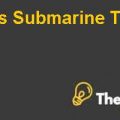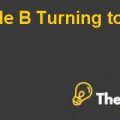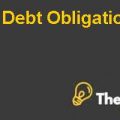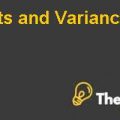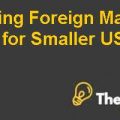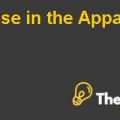
ENTREPRENEURIAL FINANCE ASSIGNMENT Case Solution
Question 1 (Follow Up Questions of Excel)
The answers to the follow up questions in the excel file are as follows:
Exercise 1
Currently, the internal rate of return of the founder and the forecasted VC cash flows is 119% and 20% respectively. However, if the exit multiple is changed to 5x then the IRR of founder is not able to be calculated because the positive cash flows reduce below the initial investment of 50000 and the IRR of the forecasted VC Cash flows remains the same at 20%.
Secondly, if we assume that 5% preferred dividend is paid out of the EBITDA at the end of each year then again the IRR for the forecasted VC cash flows remains at the same level of 20% however, the IRR of the founder reduces to 105% from 119% as shown below:
| Implied IRRs | |||
| Founder | % |
105% |
|
| Forecasted VC cash flows | % |
20% |
If preferred dividends are paid annually, then the internal rate of return for the founder would reduce.
Exercise 2
If the value cap for the founder is locked in at 3 million, then negative cash flows would be generated for the founder and all the cash flows would accrue to the VC as follows:
| Implied cash flows assuming VC converts | |||||||||
| Founder | $ |
-50,000 |
0 |
0 |
0 |
0 |
-712,930 |
||
| VC | $ |
-1,000,000 |
0 |
0 |
0 |
0 |
3,712,930 |
Moreover, since the cash flows of the founder are significantly negative therefore, it would not be possible to achieve any IRR however; the IRR of the VC would be 30%.
For a 70% ownership at the time of the exit for the VC, the cash flows for the founder and the VC need to be as follows:
| Implied cash flows assuming VC converts | |||||||||
| Founder | $ |
-50,000 |
0 |
0 |
0 |
0 |
500,000 |
||
| VC | $ |
-1,000,000 |
0 |
0 |
0 |
0 |
4,500,000 |
At this level of cash flows, the VC would be able to achieve an IRR of 35%.
Exercise 3
If the payout cap to VC is increased to 3x and then he participates in the remaining equity in the funds on a pro rata basis, still the cash flows would remain the same under both the scenarios as follows:
| VC converts: | |||||||||
| Cash flows | $ |
-1,000,000 |
0 |
0 |
0 |
0 |
1,500,000 |
||
| IRR | % |
8% |
| VC does not convert: | |||||||||
| Cash flows | $ |
-1,000,000 |
0 |
0 |
0 |
0 |
2,000,000 |
||
| IRR | % |
15% |
Furthermore, if the company had a net profit of 5 million rather than 0.5 million then still the VC would convert given a 3x cap because the IRR if he converts is much higher at 72% than 15% if he does not converts. Furthermore, if the liquidation preference was still 2x but there was no cap, the decision of the VC would have remained same due to higher IRR when he converts as seen below:
| VC converts: | |||||||||
| Cash flows | $ |
-1,000,000 |
0 |
0 |
0 |
0 |
15,000,000 |
||
| IRR | % |
72% |
| VC does not convert: | |||||||||
| Cash flows | $ |
-1,000,000 |
0 |
0 |
0 |
0 |
2,000,000 |
||
| IRR | % |
15% |
Exercise 4
If the IRR of the VC is capped at 27% and if the exit multiple at the exit at the IPO is 20x, then cash flows and the IRR of the founder would be as follows:.......................
This is just a sample partial case solution. Please place the order on the website to order your own originally done case solution.


